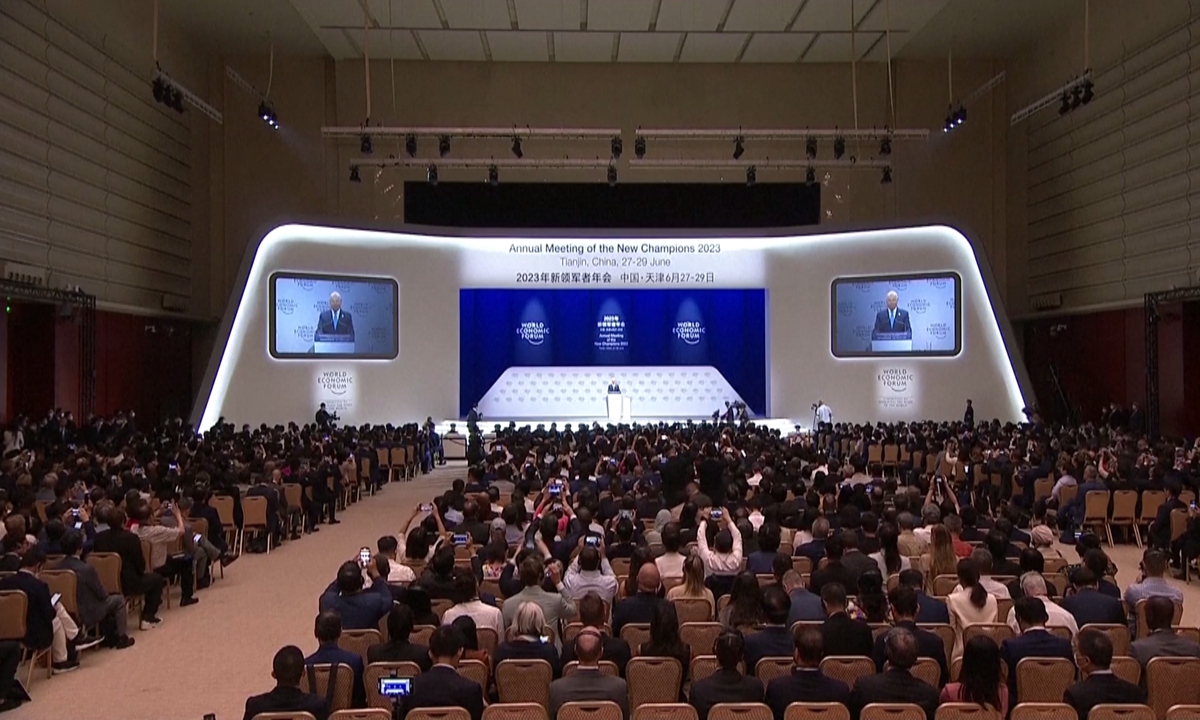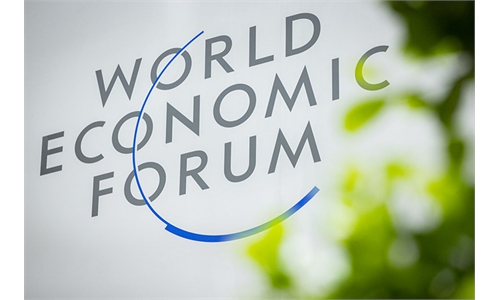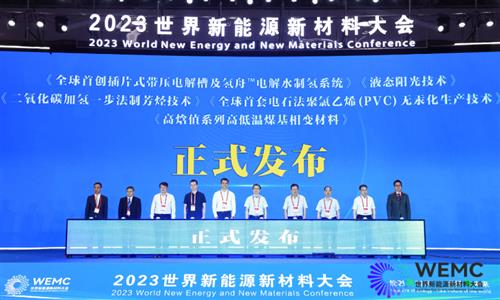
Founder and Executive Chairman of the World Economic Forum Klaus Schwab delivers a speech at the opening ceremony of the Summer Davos Forum on June 27, 2023. Photo: VCG
Attendees to the World Economic Forum's 14th Annual Meeting of the New Champions (AMNC), also known as the Summer Davos forum, in North China's Tianjin have noted China's driving role in fostering the world's green transition.
China is now the main driving force behind global green production, shaping industrial transition and also fostering the green transition, industry insiders said.
While green transition and innovation have been recurring themes at the Summer Davos, such development holds particular significance in 2023.
The world is seeing record demand for renewable energy sources amid a broad shift toward greener sources to combat climate change, while also dealing with the energy crisis following the Russia-Ukraine conflict.
"Chinese photovoltaic (PV) companies have brought down the overall cost of PV power generation by 90 percent in the past decade, allowing more countries and regions to see solar power as a cheap and clean energy source and facilitating new energy development for their businesses," Talsiman Huo, brand general manager at LONGi Green Energy Technology Co, told the Global Times in an exclusive interview during the forum.
Qian Jing, vice president of Jinko Solar, another Chinese PV giant, told the Global Times in an exclusive interview at the AMNC that climate change is coming at a speed that has exceeded expectations and its chain effect is complicated. Many people remember that last summer, some parts of Southwestern China had to switch off electricity supplies due to low water levels at hydro power plants. There was also a drop in the wind that drives offshore wind mills. In Germany, coal could not be shipped to power plants due to low water levels in the Rhine.
This has made solar power a key renewable energy source, Qian noted.
Huo said that Chinese enterprises account for more than eight of the world's top 10 PV companies, and his company's foreign export business accounts for more than 50 percent of the company's total business, with Europe and the US as main export destinations.
Huo added that the company's overseas photovoltaic business is targeting the booming markets of Central and East African countries, and has new factories in Vietnam and Malaysia, continuously providing low-carbon products to promote the world's green transition.
"Chinese PV products are competitive in the international market in terms of cost performance and technology, and this competitiveness is helping these regions to meet their solar energy needs and respond to an ambitious global goal of achieving a low carbon footprint," Huo noted.
Qian said in the past year emerging markets in Southeast Asia, the Middle East, Latin America, Central Asia also gained momentum. There has been particularly impressive growth in the Brazilian market, with large demand for rooftop installations, Qian noted.
Thanks to companies including Jinko Solar that have consistently reduced costs through technology advancement, solar development in emerging markets has become faster and there is more potential than in developed countries, because of affordability, greater space for installation and richer natural conditions for utilizing renewable energy.
When talking about the geopolitics and some external barriers, Huo said that although globalization is now an irreversible future development direction, China's PV companies have met some challenges in their overseas development, such as policy barriers in some countries or restrictions on imports of some Chinese products.
"However, we think that these challenges must be regional and temporary, because in the long run, human demand for cheap and clean energy will not be reduced, and Chinese PV companies are able to help them meet this demand," Huo said.
LONGi and Jinko Solar are typical of China's rapid advance in green development. In recent years, exports of new-energy vehicles, PV and lithium battery products - known as China's "three new items" - have become more popular.
China recorded new highs in output value and exports of PV products in 2022, with Europe remaining the most important export market, accounting for about 50 percent of total exports.
An opinion piece published Monday by Bloomberg said that China generates twice the wind power of the US and a third of the world's solar power. China is also the major provider of solar capacity to other countries, producing 75 percent of the world's photovoltaic capacity.
These domestic efforts and exports translated to carbon reduction of 2.83 billion tons in 2022, or 41 percent of the global carbon cuts from shifting to renewables, per official data.



